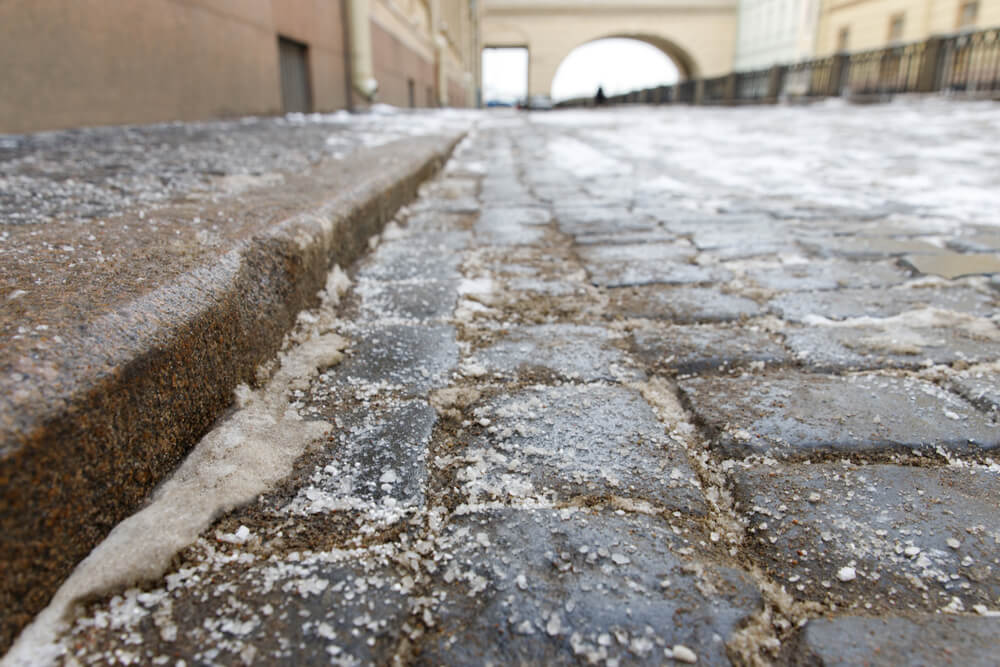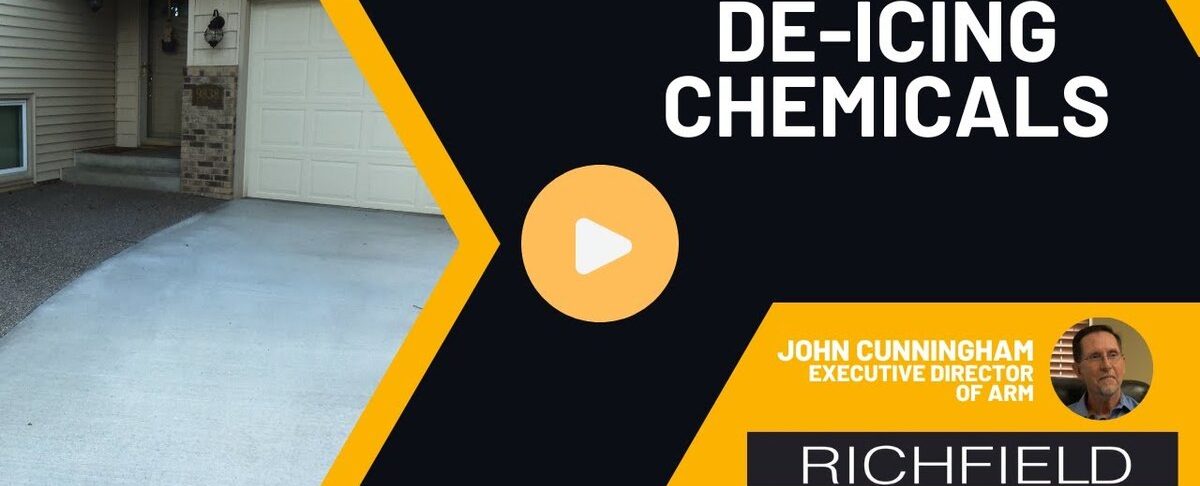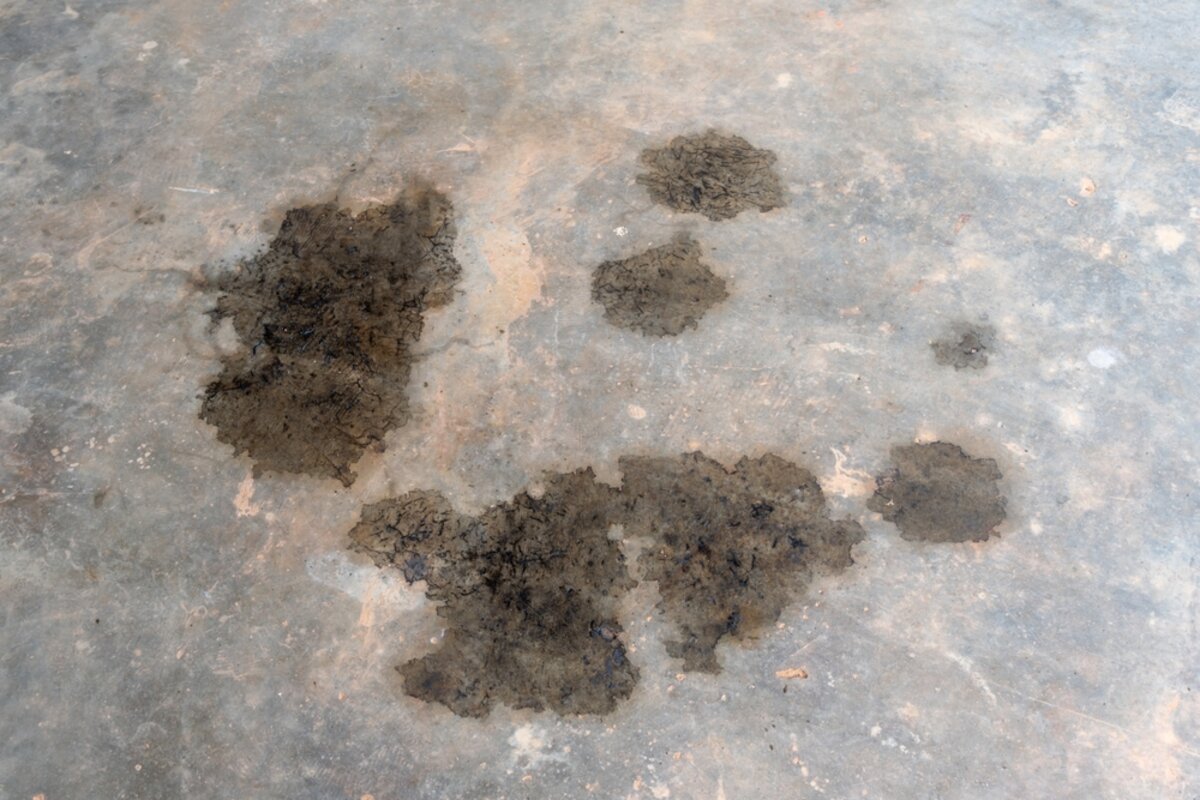The world of deicing chemicals has come a long way since its early days when the go-to solution was largely sodium chloride, commonly known as rock salt. If you’ve ever wondered how these materials have evolved over the years, or questioned whether they are all based on salt, this blog post is for you.
We’ll delve into the complexities of modern deicing solutions, including how they work, their composition, and the challenges they present, particularly for surfaces like concrete driveways and pavements.
From Rock Salt to Liquid Solutions
Prevalence of Rock Salt in the Past
In the past, the primary substance used for melting ice on driveways, sidewalks, and pavements was rock salt. Rock salt, or sodium chloride, was often laid down in its rock form and sometimes mixed with sand. The sand served a dual purpose—preventing the salt from clumping together and providing additional grit on the surface to reduce slippage.
Liquid Deicing Solutions
Fast forward to today, and we see an increasing use of liquid deicers. These liquid solutions present both advantages and challenges compared to their traditional, granular counterparts. Liquid deicers can penetrate a surface like a concrete slab more quickly and easily. They also adhere more closely to the concrete surface, which is a double-edged sword, as we’ll discuss later.
What’s in Modern Deicing Chemicals?
Today’s deicers are far more sophisticated than simple sodium chloride. These solutions often contain compounds like magnesium chloride and calcium chloride, which can sometimes be mistaken for traditional salt or brine. These chemicals have different properties, and they may offer certain advantages, such as working effectively at lower temperatures.
Role of Additives
Interestingly, modern deicers often contain additional ingredients, like beet juice, which is high in sugar and helps the deicing solution adhere to the concrete surface. These additives can also be environmentally friendly alternatives to traditional chemicals. However, they are not without their downsides, as some of these mixtures can lead to surface damage over time.
Pros and Cons of Modern Liquid De-Icers
Effective, But Potentially Harmful
Liquid deicers are popular because they prevent ice from bonding to the concrete, making removal easier. However, the downside is that these chemicals can linger on the surface for an extended period, potentially leading to surface degradation.
First Winter Considerations for Concrete Surfaces
Particularly for those who have newly laid concrete driveways or pavements, it’s advisable to avoid using any kind of deicing chemicals during the first winter. This cautionary approach helps to preserve the integrity of the concrete surface. Of course, avoiding deicers altogether might not be practical in all situations, especially when safety is a concern due to icy conditions.
Conclusion

As we’ve seen, the realm of deicing chemicals is more diverse than one might initially think. Gone are the days when sodium chloride was the only option. Today’s modern liquid deicers offer quick action and strong adhesion to surfaces. However, they also bring challenges, especially when it comes to maintaining the condition of concrete surfaces.
As always, when using any deicing solutions, caution and care are key. And if you’ve just installed a new concrete driveway, it might be best to avoid deicers during that first critical winter season. Contact Richfield Concrete today to learn what deicing chemicals are and if they are salt.









